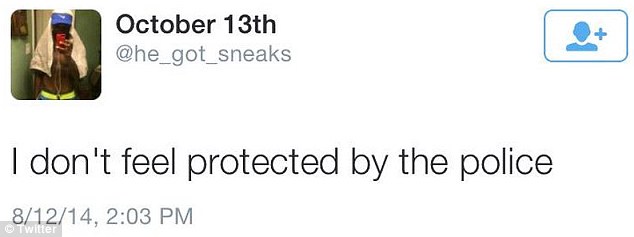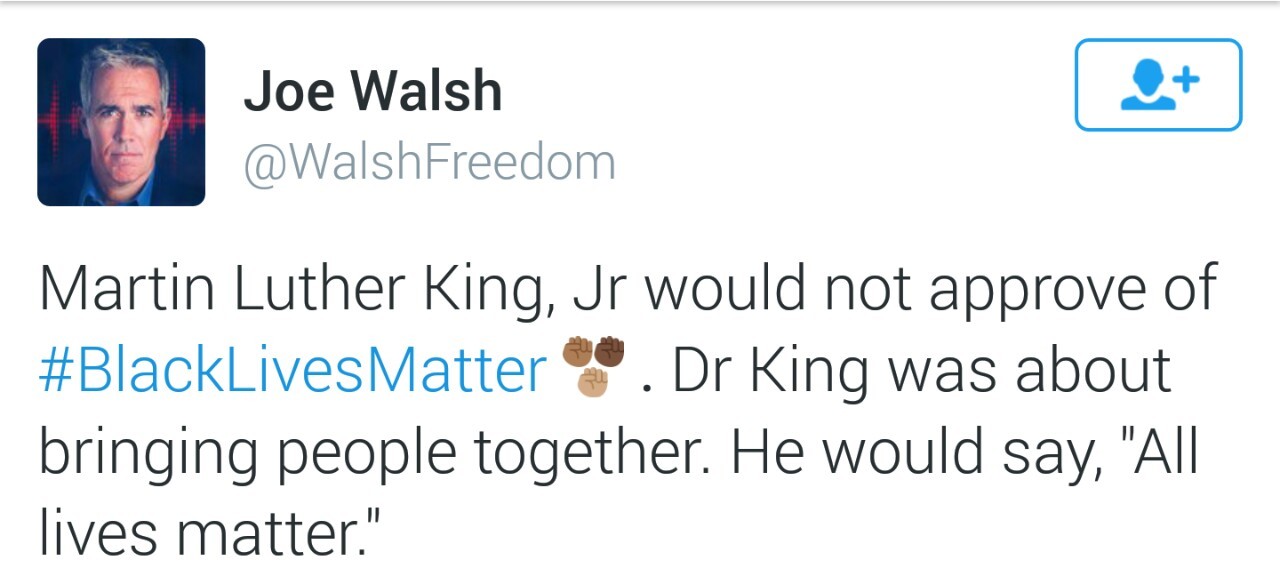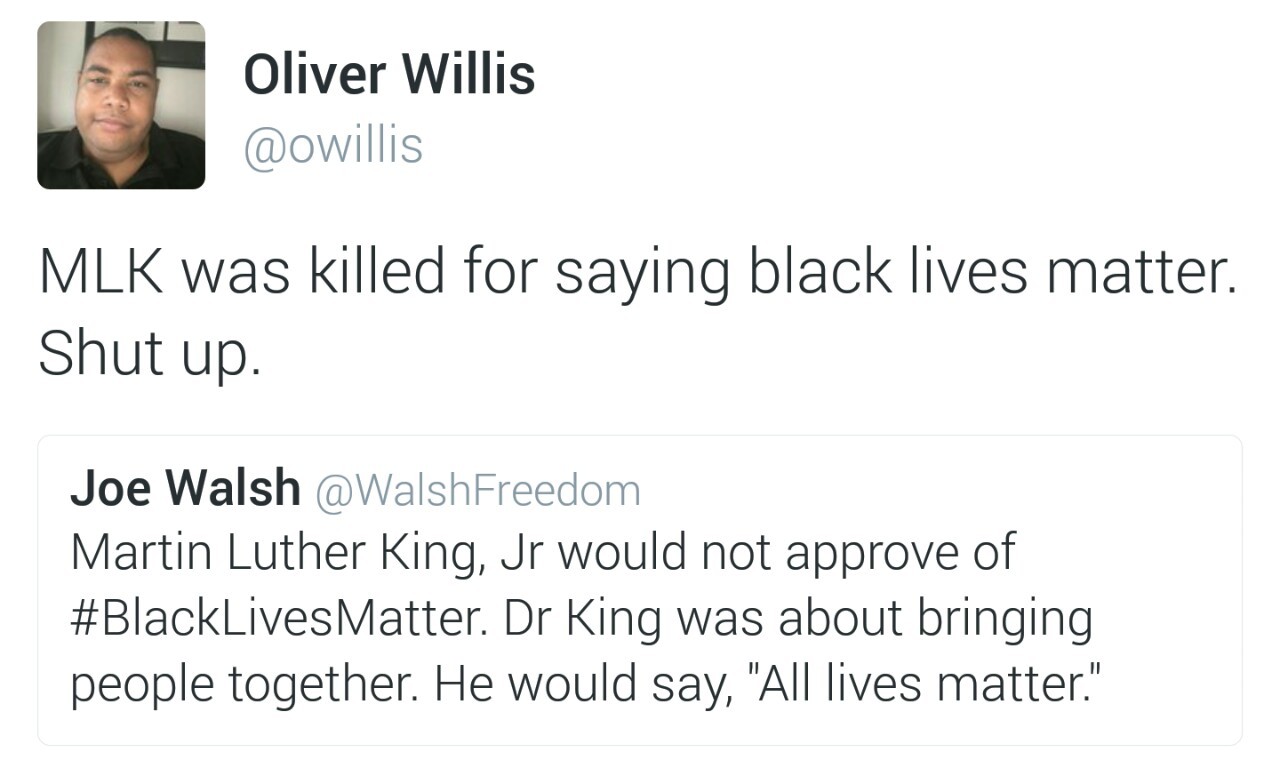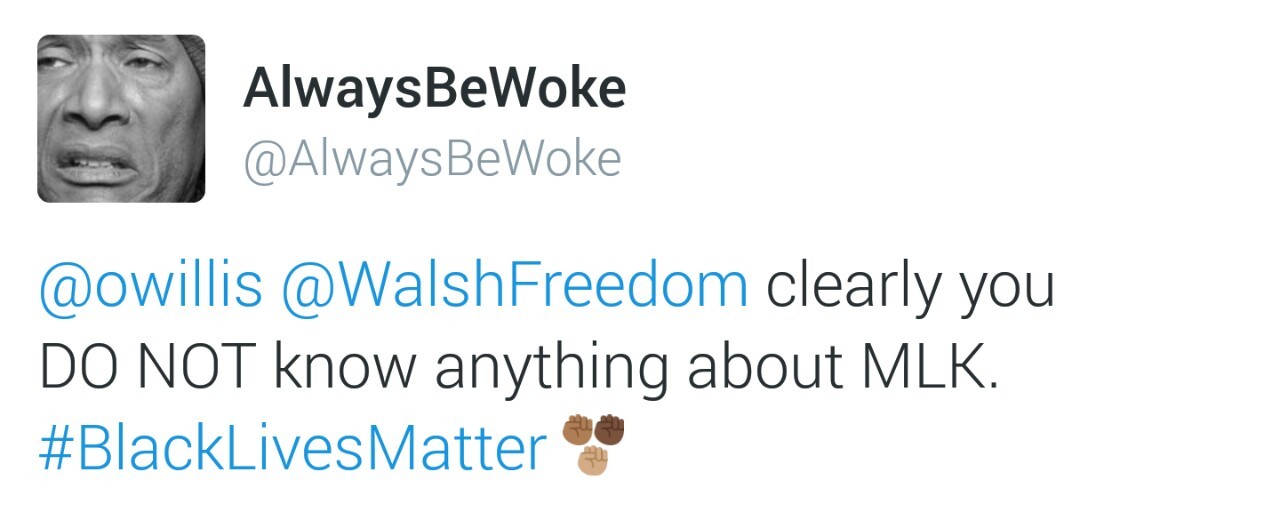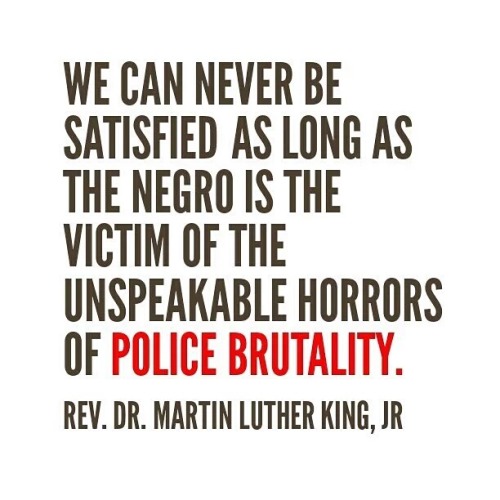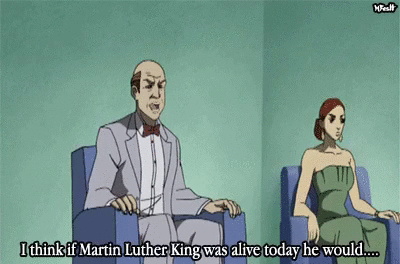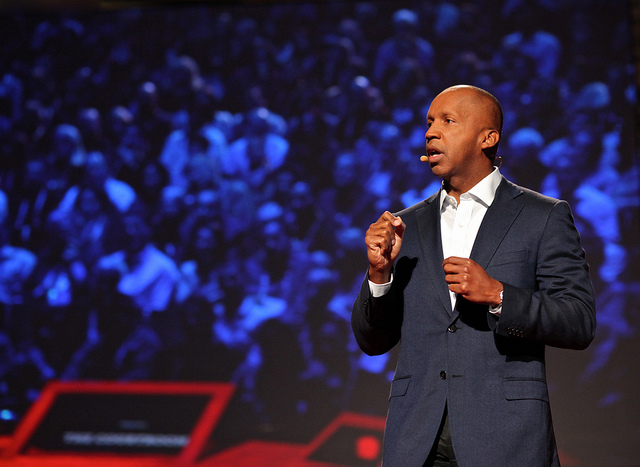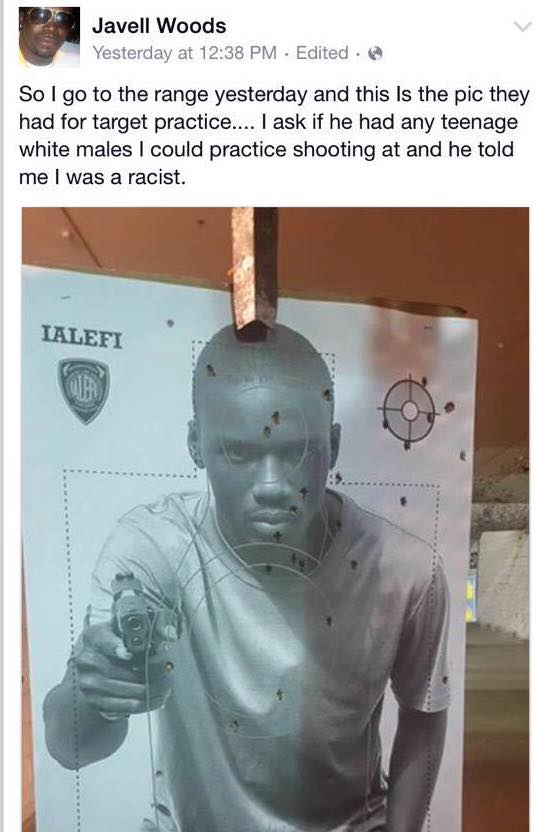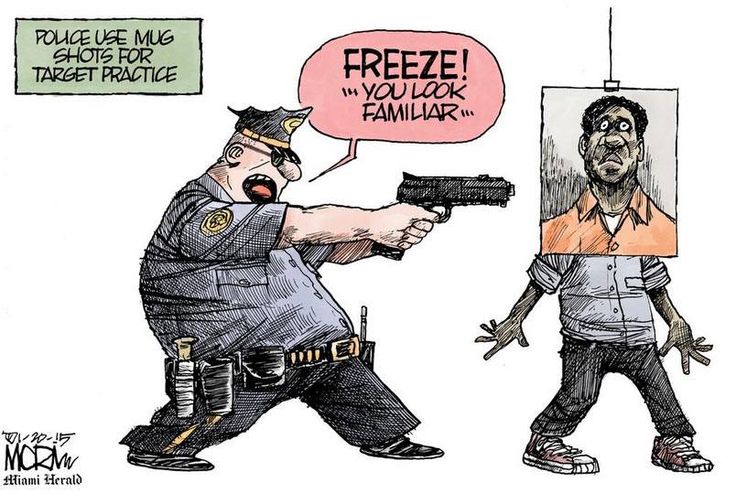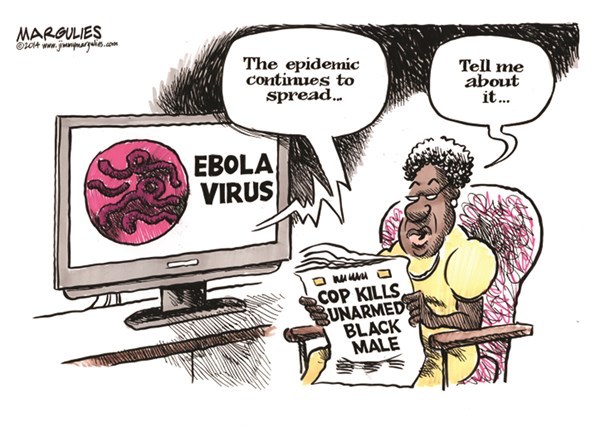Aren’t more white people than black people killed by police?
Yes,
but no.
Members of Black Lives Matter participate in the annual Martin Luther King Holiday Peace Walk and Parade in Washington, D.C. (Alex Wong/Getty Images)
Dylan Noble died on the last Saturday of June.
Police in Fresno, Calif., received a report of a man walking a downtown street with a rifle, but when they arrived, they instead found Noble speeding by in his pickup truck.
When they tried to pull him over, the 19-year-old led police to a nearby gas station and then exited his car.
“The driver then turned towards officers with one hand concealed behind his back, and told officers he hated his life,” the Fresno police department said in a statement. “As he continued to advance towards officers, an officer-involved shooting occurred.”
The department framed it as a “suicide by cop.” His family insisted that could not be the case, urged federal officials to investigate and demanded that video from the body cameras worn by both officers involved be released.
“I am outraged that the police would shoot my son and say that it is his fault,” Veronica Nelson, Noble’s mother, told reporters at a news conference not long after the shooting. “So please join me as I’m demanding justice for Dylan.”
Noble’s friends and family gathered for days at the gas station parking lot where he was killed — some waving Confederate flags and others chanting, “White lives matter.”
And soon, they were angry at their inability to garner more attention. At a time when dozens of police killings have prompted outrage, why hadn’t this one? Was it because Noble was white?
Many across the nation find themselves this week asking a similar question in the days since two recent police shootings of black men — in Baton Rouge and Falcon Heights, Minn. — have sparked nationwide protests:
Doesn’t the available data show more white Americans are being killed by police officers? Where is the outrage for them?
“If we have a shooting, we end up assuming that it had to be racial,” former Arkansas governor Mike
Huckabee (R) said Saturday during an interview with Fox News, in which he argued that national concerns about police killings of black men are overblown.
“When in fact, as we know … more white people have been shot by police officers this year than minorities,” he said.
Huckabee is not, factually, incorrect.
In 2015, The Washington Post launched a real-time database to track fatal police shootings, and the project continues this year. As of Sunday, 1,502 people have been shot and killed by on-duty police officers since Jan. 1, 2015. Of them, 732 were white, and 381 were black (and 382 were of another or unknown race).
But as data scientists and policing experts often note, comparing how many or how often white people are killed by police to how many or how often black people are killed by the police is statistically dubious unless you first adjust for population.
According to the most recent census data, there are nearly 160 million more white people in America than there are black people. White people make up roughly 62 percent of the U.S. population but only about 49 percent of those who are killed by police officers. African Americans, however, account for 24 percent of those fatally shot and killed by the police despite being just 13 percent of the U.S. population. As The Post noted in a new analysis published last week, that means black Americans are 2.5 times as likely as white Americans to be shot and killed by police officers.
U.S. police officers have shot and killed the exact same number of unarmed white people as they have unarmed black people: 50 each. But because the white population is approximately five times larger than the black population, that means unarmed black Americans were five times as likely as unarmed white Americans to be shot and killed by a police officer.
Police have shot and killed a young black man (ages 18 to 29) — such as Michael Brown in Ferguson, Mo. —175 times since January 2015; 24 of them were unarmed. Over that same period, police have shot and killed 172 young white men, 18 of whom were unarmed. Once again, while in raw numbers there were similar totals of white and black victims, blacks were killed at rates disproportionate to their percentage of the U.S. population. Of all of the unarmed people shot and killed by police in 2015, 40 percent of them were black men, even though black men make up just 6 percent of the nation’s population.
And, when considering shootings confined within a single race, a black person shot and killed by police is more likely to have been unarmed than a white person. About 13 percent of all black people who have been fatally shot by police since January 2015 were unarmed, compared with 7 percent of all white people.
In response to these statistics, critics of police reform — often political conservatives and police unions — typically argue that the reason more black men and women are shot and killed by police is that black Americans commit more violent crime.
“There’s too much violence in the black community,” former New York City mayor Rudy Giuliani said Sunday on CBS’s “Face The Nation.” “If you want to deal with this on the black side, you’ve got to teach your children to be respectful to the police, and you’ve got to teach your children that the real danger to them is not the police; the real danger to them, 99 out of 100 times, 9,900 out of 10,000 times, are other black kids who are going to kill them. That’s the way they’re gonna die.”
Giuliani: Black parents should teach children to respect police
Embed Copy Share
Play Video1:11
Responding to the wave of demonstrations across the country that have been triggered by recent police shootings of black men, Former New York Mayor Rudy Giuliani said black parents should teach their children to be respectful to police. Former New York Mayor Rudy Giuliani says the "real danger" black children face is not the police but "other black kids who are gonna kill them." (Reuters)
Responding to the wave of demonstrations across the country that have been triggered by recent police shootings of black men, Former New York Mayor Rudy Giuliani said black parents should teach their children to be respectful to police. (Reuters)
As the New York Daily News noted: Giuliani is wrong about the so-called black-on-black crime rate. According to FBI numbers from 2014, about 90 percent of black homicide victims were killed by other black people. The “white-on-white” murder rate that same year — homicides in which a white person was killed by another white person — was 82 percent of all murders of white people.
[How Philando Castile’s killing changed the way blacks talk about traffic stops]
But it is true that a disproportionate amount of murders and other violent crimes are committed by black Americans.
Because detailed FBI data on crime can lag by several years, the
most-cited statistics on this point refer to 2009 data. According to that data, out of all violent crimes in which someone was charged, black Americans were charged with 62 percent of robberies, 57 percent of murders and 45 percent of assaults in the country’s 75 biggest counties — despite the fact that black Americans made up just 15 percent of the population in those places.
“Such a concentration of criminal violence in minority communities means that officers will be disproportionately confronting armed and often resisting suspects in those communities, raising officers’ own risk of using lethal force,” wrote Heather Mac Donald, a conservative researcher, in a Wall Street Journal column headlined
“The Myths of Black Lives Matter” that was originally published in February and re-published this weekend. The assertion that the black men and women killed by police are primarily violent criminals and the explanation for racial disparities in who gets killed by law enforcement is the premise of Mac Donald’s new book, “The War on Cops
.”
A 2015 study by a University of California at Davis researcher concluded there was “no relationship” between crime rates by race and racial bias in police killings. A
report released last week by the Center for Policing Equity, which reviewed arrest and use-of-force data from 12 police departments, concluded that black residents were more often targeted for use of police force than white residents, even when adjusting for whether the person was a violent criminal.
“We’ve been hearing these arguments going around without any data or any evidence from folks who are saying that police are killing so many people — particularly black people — because they say black people are in high-crime communities and potentially involved in criminal activity,” Samuel Sinyangwe, a data analyst and activist with Campaign Zero — a policy-oriented activist collective associated with the Black Lives Matter protest movement —
told the Huffington Post in December.
armed with a weapon and attempting to attack the officer or someone else.
But an independent analysis of The Post’sdata conducted by a team of criminal-justice researchers concluded that, when factoring in threat level, black Americans who are fatally shot by police are no more likely
to be posing an imminent lethal threat to the officers at the moment they are killed than white Americans fatally shot by police.
[Study finds police fatally shoot unarmed black men at disproportionate rates]
The study also sought to answer whether officers were more likely to shoot and kill someone who is unarmed if the shooting happened to occur in a high-crime area. They concluded that is not the case.
“The only thing that was significant in predicting whether someone shot and killed by police was unarmed was whether or not they were black,” said Justin Nix, a criminal-justice researcher at the University of Louisville and one of the report’s authors,
said in April. “Crime variables did not matter in terms of predicting whether the person killed was unarmed.”
“This just bolsters our confidence that there is some sort of implicit bias going on,” Nix said. “Officers are perceiving a greater threat when encountered by unarmed black citizens.”
The phrase Black Lives Matter first received national attention in summer 2014 and, since then, has become part of conversations on race in America. Here's how the phrase became a movement. The phrase Black Lives Matter got national attention in summer 2014. Here's how the phrase became a movement. (Claritza Jimenez, Julio Negron/The Washington Post)
The phrase Black Lives Matter first received national attention in summer 2014 and, since then, has become part of conversations on race in America. Here's how the phrase became a movement. (Claritza Jimenez,Julio Negron/The Washington Post)
Racial disparities in the rate of police shootings do not mean, though, that criminal-justice experts are not concerned about how many people are being killed by police officers — including white people.
Statistics kept by the FBI have never counted more than 460 police shootings in a single year. However, The Post’sdatabase chronicled 990 fatal police shootings in 2015, and 494 of those people were white.
Among them are several cases that drew national headlines. Two officers will face trial for the shooting of 6-year-old Jeremy Mardis,
2015’s youngest police-shooting victim. The family of
Zachary Hammond, who was shot and killed by officers in Seneca, S.C., received a $2.15 million settlement.
[Inside small-town Louisiana feud that led to a 6-year-old boy’s police killing]
And the civil suit is still pending in the case of Deven Guilford, a white 17-year-old who was
killed during a traffic stop. Guilford flashed his headlights on a snowy Michigan night in February 2015 to signal to an oncoming driver to turn off his high beams. The driver turned out to be an officer, who did a U-turn and pulled Guilford over. In a confrontation captured on several cameras the two argued, then fought.
Guilford voluntarily exited the car and lay on the ground when commanded — but he refused to set down his cellphone. Sheriff’s Department Sgt. Jonathan Frost shocked him with a stun gun. The video goes black. Then, the sound of gunshots.
“Deven went from flashing his lights to being dead six minutes later,” Hugh Davis, an attorney for Guilford’s family,
told The Post in December. “And there is no explanation for it.”
[The Washington Post’s 2015 database of fatal police shootings]
In Fresno, Noble was at least the seventh person shot and killed by city police since 2015, and one of three white men (the other four were Hispanic men), according to The Post’sdatabase.
And cellphone
video obtained by the Fresno Bee raises new questions about the police account of the shooting.
In the video, Noble can be seen lying on the ground next to his pickup truck as officers yell at him to keep his hands up. One officer fires one shot. Noble can be seen raising his arm and heard saying, “I’ve been shot.” Then another shot can be heard.
Late last, week the FBI said it would
open an investigation.
Steven Rich contributed to this report, which has been updated.
Protests in Minnesota and D.C. after a black man was fatally shot during a traffic stop
Protesters gather in Falcon Heights, a St. Paul suburb, after the killing of 32-year-old Philando
Castile.
https://www.washingtonpost.com/news...-by-police-yes-but-no/?utm_term=.39742cd86f02
.
.
no allegation that the young man posed a threat of some kind to the officers or someone else . . .
WTF was going on here ???
